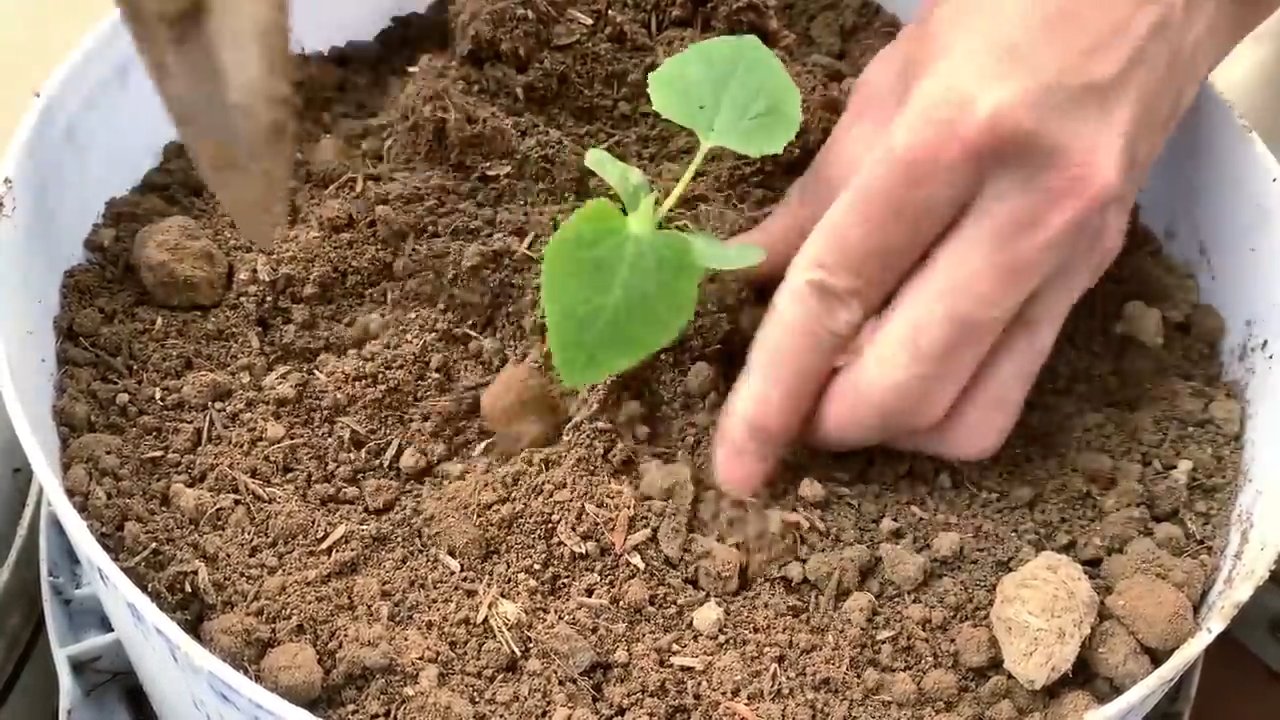Cut melon easily? Absolutely! Let’s be honest, wrestling with a slippery, oversized melon can feel less like preparing a refreshing snack and more like a kitchen combat sport. I’ve definitely been there, juice spraying everywhere, chunks flying, and a general sense of melon-induced chaos. But fear not, fellow fruit enthusiasts! This isn’t just another article; it’s your guide to mastering the art of melon slicing with simple, effective DIY tricks that will transform your fruit prep game.
Melons have a rich history, enjoyed for centuries across various cultures. From the ancient Egyptians who depicted watermelons in their art to the elaborate melon carvings in Asian traditions, these fruits have always held a special place. But even with all that history, the basic problem remains: they can be a pain to cut! That’s where these DIY hacks come in.
Why do you need these tricks? Because life is too short to struggle with stubborn rinds and uneven slices! Whether you’re prepping a healthy breakfast, a refreshing summer salad, or a show-stopping fruit platter, knowing how to cut melon easily and efficiently will save you time, reduce mess, and, most importantly, make the whole experience more enjoyable. I’m going to share my favorite, tried-and-true methods that will have you slicing like a pro in no time. Get ready to ditch the struggle and embrace the sweet satisfaction of perfectly cut melon!

The Easiest Way to Cut a Watermelon (and Other Melons!) Like a Pro
Okay, let’s be honest. Cutting a watermelon can be a sticky, messy, and sometimes downright dangerous affair. I’ve definitely had my fair share of near-misses with a giant knife and a slippery melon. But fear not! I’m going to share my foolproof method for cutting watermelon (and other melons like cantaloupe and honeydew) quickly, cleanly, and safely. This technique will give you perfect slices or cubes every time, and you’ll wonder why you ever struggled before.
What You’ll Need
Before we dive in, let’s gather our supplies. You probably have most of these already:
* A large cutting board: Make sure it’s stable and won’t slip around. A damp towel underneath can help.
* A sharp chef’s knife: This is crucial. A dull knife is more dangerous than a sharp one.
* A smaller paring knife (optional): This can be helpful for removing the rind if you prefer.
* A large bowl: For holding your cut watermelon pieces.
* Paper towels: For wiping up any sticky messes (and there will be some!).
Method 1: The Classic Wedge Approach
This is the method most people are familiar with, but I’m going to show you how to do it *right* for maximum efficiency and minimal mess.
Step 1: Wash the Watermelon
This might seem obvious, but it’s important! Even though you’re not eating the rind, the knife will be dragging across it and potentially transferring bacteria to the flesh. Give your watermelon a good scrub under cold running water.
Step 2: Cut the Watermelon in Half
Place the watermelon on your cutting board. Using your sharp chef’s knife, carefully cut the watermelon in half lengthwise. Make sure your fingers are out of the way! I like to start by scoring the rind first, then applying more pressure to cut all the way through.
Step 3: Cut Each Half into Quarters
Now, take one of the watermelon halves and place it cut-side down on the cutting board. Again, using your chef’s knife, cut it in half lengthwise. Repeat with the other half. You should now have four watermelon quarters.
Step 4: Slice the Watermelon into Wedges
Take one of the watermelon quarters and place it cut-side up on the cutting board. Starting at one end, slice the watermelon into wedges of your desired thickness. I usually go for about 1-inch thick wedges. Repeat with the remaining quarters.
Step 5: Serve and Enjoy!
And that’s it! You now have perfectly sliced watermelon wedges ready to enjoy. This method is great for serving at picnics or barbecues.
Method 2: The Cube Master Technique
This method is perfect if you want to add watermelon to salads, fruit skewers, or just want a more manageable way to eat it.
Step 1: Wash the Watermelon (Again!)
Just like before, give your watermelon a good scrub under cold running water.
Step 2: Cut Off the Ends
Place the watermelon on your cutting board. Using your sharp chef’s knife, cut off both ends of the watermelon, about 1-2 inches from the end. This will create a stable base for the next steps.
Step 3: Remove the Rind
Stand the watermelon upright on one of the flat ends you just created. Using your chef’s knife (or a paring knife if you prefer), carefully slice off the rind from top to bottom, following the curve of the watermelon. Try to remove as much of the white pith as possible, as it doesn’t taste very good. Work your way around the entire watermelon until all the rind is removed.
Step 4: Cut into Slabs
Lay the rindless watermelon on its side. Cut it into slabs about 1-2 inches thick.
Step 5: Cut into Sticks
Take one of the slabs and cut it into sticks about 1-2 inches wide.
Step 6: Cut into Cubes
Now, take the sticks and cut them into cubes of your desired size. Repeat with the remaining slabs.
Step 7: Admire Your Perfect Cubes!
You now have a bowl full of perfectly cubed watermelon, ready to be used in your favorite recipes or enjoyed as a refreshing snack.
Method 3: The Cantaloupe and Honeydew Hack
This method works great for cantaloupe and honeydew melons because of their firmer texture. It’s similar to the watermelon cube method, but with a few key differences.
Step 1: Wash the Melon
As always, start by washing your cantaloupe or honeydew melon under cold running water.
Step 2: Cut in Half and Remove Seeds
Place the melon on your cutting board and cut it in half lengthwise. Use a spoon to scoop out the seeds and any stringy fibers.
Step 3: Cut into Wedges
Place each melon half cut-side down on the cutting board. Cut each half into wedges, similar to how you would cut a watermelon into wedges. The number of wedges will depend on the size of the melon, but I usually aim for 6-8 wedges per half.
Step 4: Separate the Flesh from the Rind
This is where the magic happens! Take one of the melon wedges and hold it in your non-dominant hand. Using your chef’s knife, carefully slice between the flesh and the rind, separating them completely. You can do this by running the knife along the inside of the rind, following its curve.
Step 5: Slice or Cube the Flesh
Once the flesh is separated from the rind, you can slice it into smaller pieces or cube it, depending on your preference.
Step 6: Repeat and Enjoy!
Repeat steps 4 and 5 with the remaining melon wedges. You’ll be amazed at how quickly and easily you can cut a cantaloupe or honeydew melon using this method.
Tips and Tricks for Melon-Cutting Success
Here are a few extra tips to help you become a melon-cutting master:
* Choose the right melon: Look for melons that are heavy for their size and have a consistent color. For watermelons, a dull thud when you tap it is a good sign. For cantaloupe and honeydew, a sweet aroma is a good indicator of ripeness.
* Use a sharp knife: I can’t stress this enough! A sharp knife will make the job much easier and safer.
* Keep your cutting board stable: Place a damp towel underneath your cutting board to prevent it from slipping.
* Don’t be afraid to experiment: These are just guidelines. Feel free to adjust the methods to suit your own preferences.
* Chill your melon before cutting: This will make it easier to handle and more refreshing to eat.
* Store cut melon properly: Store cut melon in an airtight container in the refrigerator for up to 3-4 days.
* Make melon balls: Use a melon baller to create fun and festive melon balls for salads or desserts.
* Freeze melon for smoothies: Cut melon into cubes and freeze them for use in smoothies or frozen cocktails.
* Don’t throw away the rind! Watermelon rind can be pickled or candied.
* Clean up as you go: Wipe up any sticky messes as you go to prevent them from spreading.
Safety First!
Cutting melons involves using a sharp knife, so it’s important to prioritize safety. Here are a few safety tips to keep in mind:
* Always cut away from yourself: This will help prevent accidental cuts.
* Keep your fingers out of the path of the knife: Use your non-dominant hand to hold the melon steady, but keep your fingers curled under and away from the blade.
* Take your time: Don’t rush the process. Focus on what you’re doing and be careful.
* If you’re not comfortable using a large knife, ask for help: There’s no shame in asking someone else to do the cutting for you.
* Supervise children: Keep children away from the cutting area.
I hope these methods and tips help you cut melons like a pro! With a little practice, you’ll be able to whip up perfect slices and cubes in no time. Enjoy!

Conclusion
So, there you have it! Mastering the art of easily cut melon is no longer a culinary challenge, but a delightful breeze. We’ve unveiled a simple yet incredibly effective DIY trick that will transform your melon-cutting experience from a frustrating chore into a satisfying accomplishment. Forget struggling with awkward angles, slippery surfaces, and uneven slices. This method is all about efficiency, safety, and presentation, ensuring you get the most out of your delicious melon every single time.
Why is this DIY trick a must-try? Because it saves you time, reduces the risk of kitchen mishaps, and elevates the way you enjoy your favorite melons. Imagine effortlessly preparing a refreshing watermelon salad for a summer barbecue, creating perfectly uniform cantaloupe wedges for a healthy snack, or crafting elegant honeydew skewers for a sophisticated appetizer. This technique empowers you to do all that and more, with minimal effort and maximum impact.
But the fun doesn’t stop there! Feel free to experiment with variations to suit your personal preferences and the type of melon you’re working with. For instance, if you’re dealing with a particularly large watermelon, consider cutting it in half first before employing the grid method. Or, if you prefer smaller, bite-sized pieces, simply adjust the spacing of your cuts accordingly. You can even use cookie cutters to create fun and festive shapes for kids’ parties or special occasions. The possibilities are endless!
Beyond the basic technique, consider enhancing your melon creations with complementary flavors and textures. A sprinkle of fresh mint, a drizzle of honey, or a squeeze of lime juice can elevate the taste profile and add a touch of sophistication. You can also incorporate melon into smoothies, juices, and even savory dishes like salads and salsas. Don’t be afraid to get creative and explore the versatility of this amazing fruit.
We are confident that once you try this DIY trick, you’ll never go back to your old melon-cutting ways. It’s a game-changer that will simplify your life and enhance your enjoyment of this delicious and nutritious fruit. So, grab your favorite melon, gather your tools, and get ready to experience the joy of effortless cutting.
We wholeheartedly encourage you to try this DIY trick and share your experience with us! Let us know how it worked for you, what variations you tried, and any tips or tricks you discovered along the way. Your feedback is invaluable and helps us continue to improve and refine our techniques. Share your photos and stories on social media using #EasyMelonCutting and inspire others to embrace this simple yet transformative method. Together, let’s revolutionize the way we cut and enjoy melons!
Remember, the key to success is practice and patience.
Don’t be discouraged if your first attempt isn’t perfect. With a little practice, you’ll be cutting melons like a pro in no time. And most importantly, have fun! Cooking should be an enjoyable experience, and this DIY trick is designed to make it just that. So, go ahead, unleash your inner melon-cutting master, and savor the sweet rewards of your efforts.
Frequently Asked Questions (FAQ)
Q: What type of knife is best for cutting melons?
A: A large, sharp chef’s knife or a serrated knife is ideal for cutting melons. The length of the blade allows you to make clean, even cuts, while the sharpness ensures that you can easily slice through the tough rind. A serrated knife is particularly useful for watermelons, as it can grip the slippery surface and prevent the knife from sliding. Make sure your knife is properly sharpened before you begin, as a dull knife can be dangerous and make the task more difficult. Always use caution and cut away from yourself.
Q: Is there a specific type of cutting board that works best?
A: A large, sturdy cutting board is essential for safely cutting melons. Choose a cutting board that is made of wood or plastic and has a non-slip surface. This will prevent the melon from sliding around while you’re cutting it. Make sure the cutting board is large enough to accommodate the entire melon, or at least half of it, to avoid having to reposition it frequently. A cutting board with a juice groove can also be helpful, as it will catch any excess juice and prevent it from spilling onto your countertop.
Q: How do I prevent the melon from slipping while I’m cutting it?
A: To prevent the melon from slipping, place a damp cloth or paper towel underneath the cutting board. This will create a more stable surface and prevent the cutting board from moving around. You can also use a non-slip mat designed specifically for cutting boards. Another tip is to make sure the melon is dry before you start cutting it. Wipe it down with a clean cloth to remove any excess moisture.
Q: What’s the best way to store cut melon?
A: Cut melon should be stored in an airtight container in the refrigerator. It’s best to consume it within 3-4 days for optimal freshness and flavor. To prevent the melon from drying out, you can line the container with a damp paper towel. Avoid storing cut melon at room temperature, as this can promote bacterial growth.
Q: Can I freeze cut melon?
A: While you can freeze cut melon, it’s important to note that the texture will change. Frozen melon will become softer and less crisp than fresh melon. However, it’s still suitable for use in smoothies, juices, and other blended recipes. To freeze melon, cut it into cubes or balls and spread it out on a baking sheet lined with parchment paper. Freeze for a few hours until solid, then transfer to an airtight container or freezer bag. This will prevent the melon from clumping together.
Q: What are some creative ways to use cut melon?
A: Cut melon can be used in a variety of creative ways. You can add it to salads, salsas, and smoothies. You can also grill it for a smoky flavor or use it to make refreshing popsicles. Melon pairs well with a variety of flavors, including mint, lime, honey, and feta cheese. Get creative and experiment with different combinations to find your favorites.
Q: What if I don’t have a large knife? Can I still use this method?
A: While a large knife is recommended for optimal results, you can still adapt this method using a smaller knife. You may need to make more cuts and work in smaller sections, but the basic principles remain the same. Just be sure to use caution and take your time. A serrated paring knife can be surprisingly effective for smaller melons like cantaloupe or honeydew.
Q: How do I know when a melon is ripe?
A: Ripeness indicators vary depending on the type of melon. For watermelons, look for a dull, rather than shiny, rind and a yellow spot on the underside where it rested on the ground. The melon should also sound hollow when tapped. For cantaloupes, the stem end should be slightly soft and fragrant. Honeydew melons should feel heavy for their size and have a slightly waxy rind.
Q: Can this method be used for other types of fruits and vegetables?
A: While this method is specifically designed for melons, the basic principles can be applied to other large, round fruits and vegetables like pumpkins, squashes, and pineapples. You may need to adjust the technique slightly depending on the shape and texture of the fruit or vegetable, but the concept of creating a grid pattern for easy cutting remains the same.
Q: What if I accidentally cut myself?
A: Safety is paramount. If you accidentally cut yourself, immediately wash the wound with soap and water. Apply pressure to stop the bleeding and cover the wound with a clean bandage. If the cut is deep or bleeding profusely, seek medical attention immediately. Always exercise caution when using knives and other sharp objects.




Leave a Comment